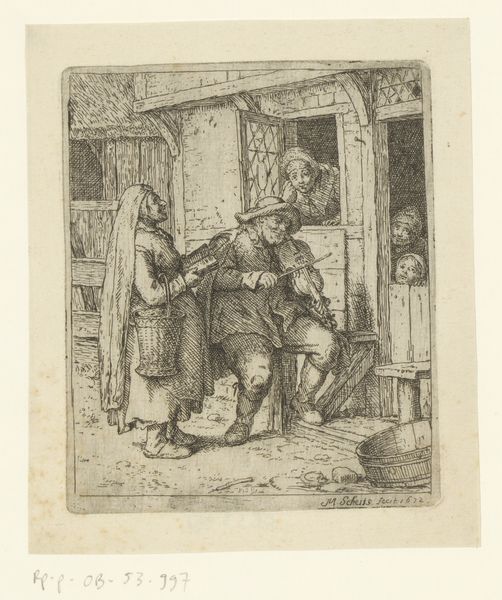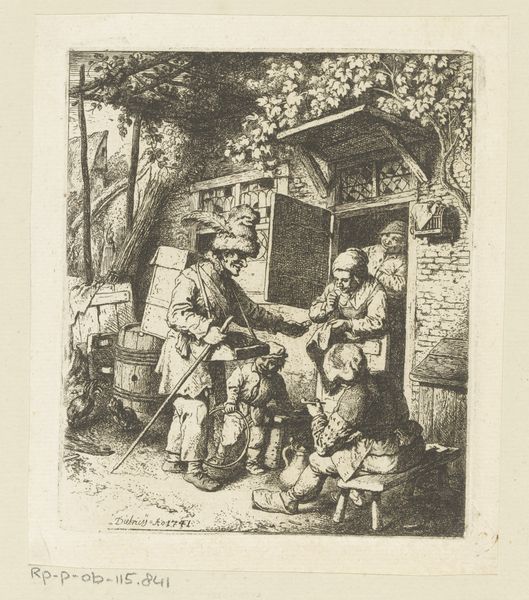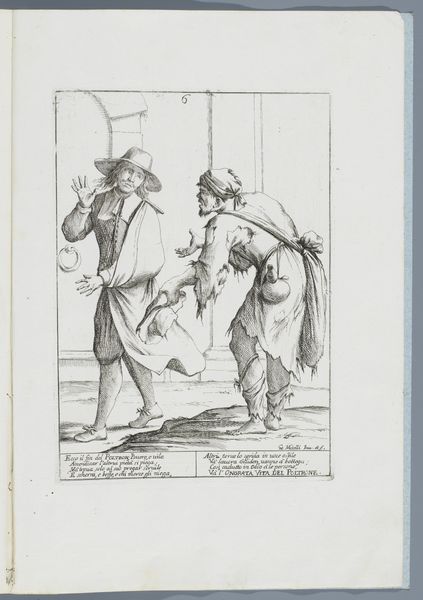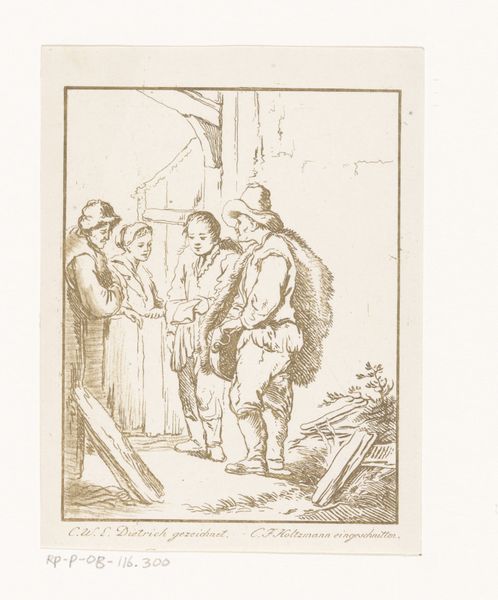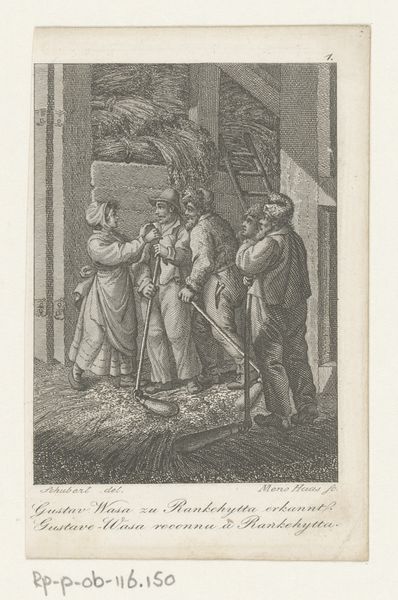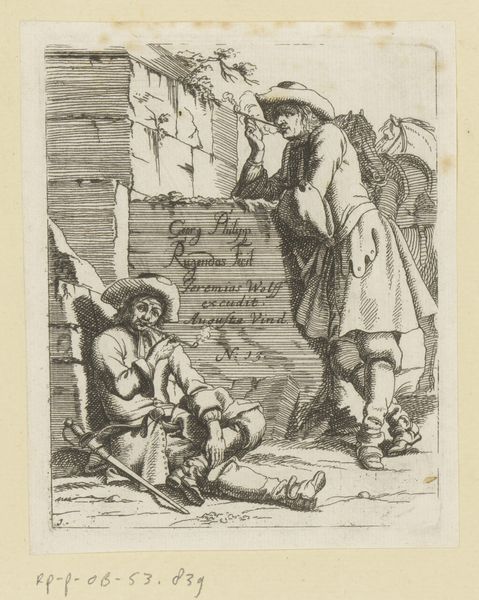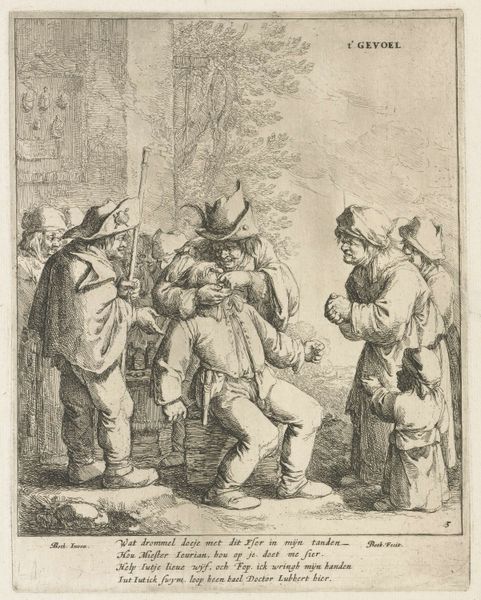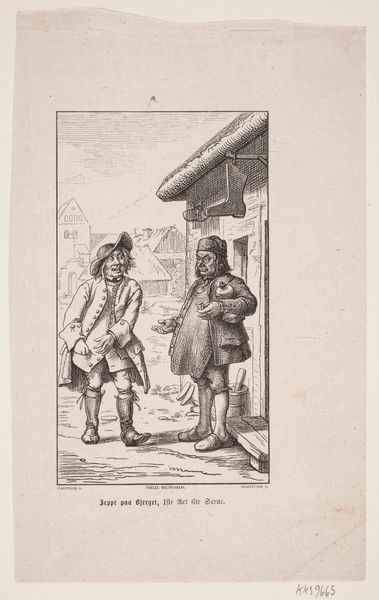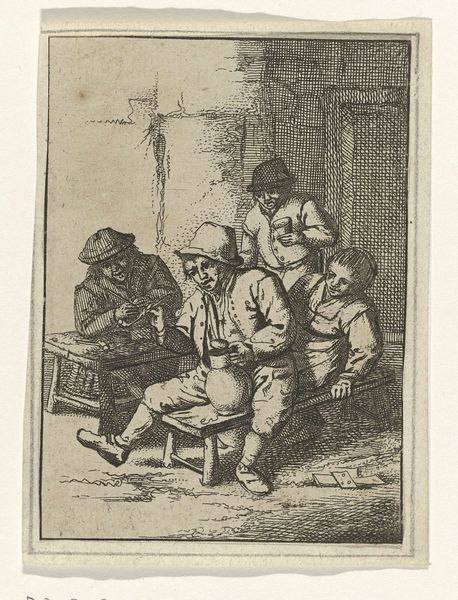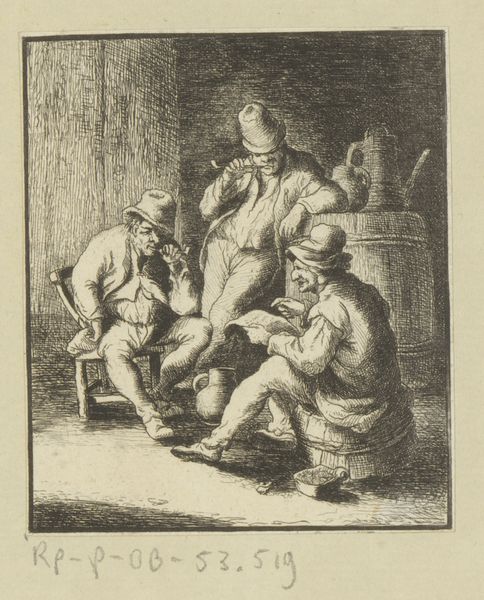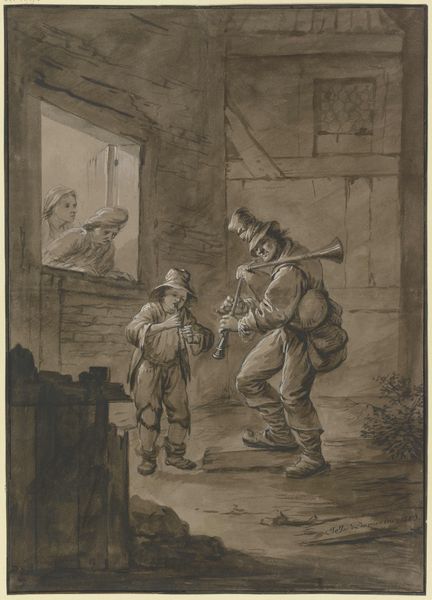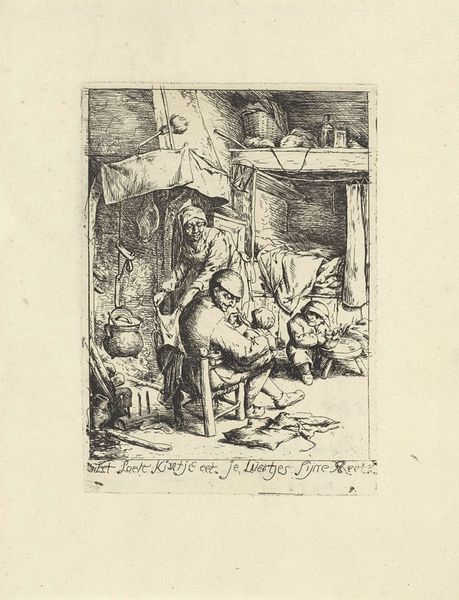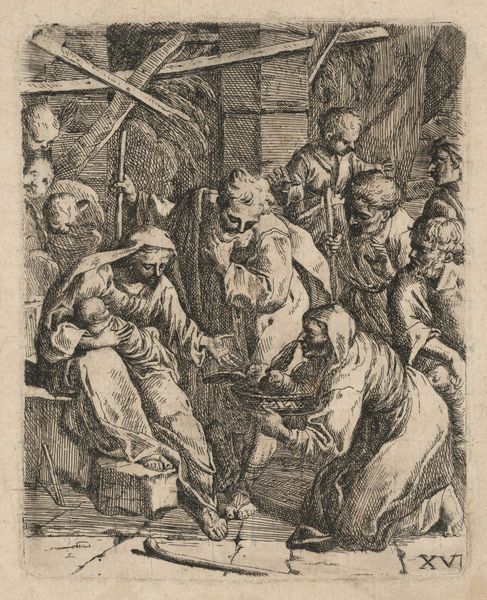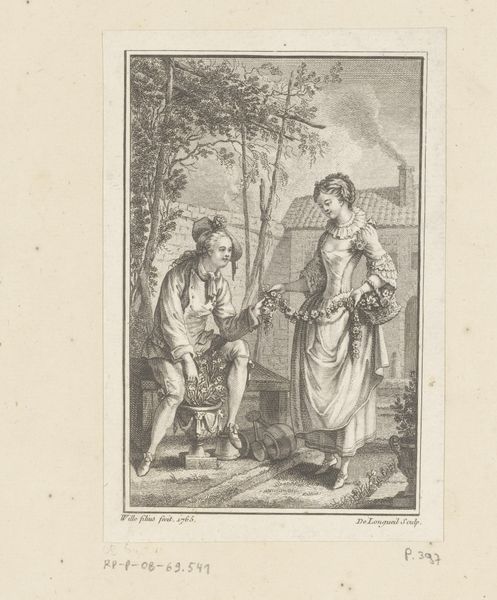
Dimensions: height 144 mm, width 95 mm
Copyright: Rijks Museum: Open Domain
Curator: Here we have "Drie personen luisteren naar man met brief," or "Three People Listening to a Man with a Letter," an etching dating from between 1750 and 1811, credited to Carl Friedrich Holtzmann. What catches your eye? Editor: The light! It’s stark, almost theatrical. It throws those figures into such high relief, lending an air of dramatic pronouncement to what is probably a very ordinary scene. There's a quality of both seriousness and expectation hanging in the air. Curator: It’s the classic narrative tableau. Consider the symbol of the letter. It represents communication, yes, but also power dynamics. The man reading possesses knowledge the others don’t, instantly creating a social hierarchy. We see that rendered visually. The cultural memory of the town crier is embedded there. Editor: Precisely, and Holtzmann very cleverly stages it in a very familiar public space - probably near an entrance where there are stacked wood scraps. It transforms an ostensibly private matter, this reading, into something very public, almost an event. I am intrigued by the interplay of formality and everyday life. What could the social role be of such "performance" in the baroque era? Curator: That public dimension shapes our interpretation. We understand, even subconsciously, the societal impact of literacy and information control during the late Baroque and early Romantic periods. It resonates with anxieties and aspirations circulating through rapidly modernizing communities. Editor: Note also that the subjects almost lean into one another. What emotions were baroque audiences expected to associate with scenes of common life? And were the poor common folk depicted? This etching provides important insights into who held cultural capital during Holtzmann's time. Curator: An interesting lens, that consideration of class representation. It's also valuable to recall that, being an etching, this work would have been widely reproducible. Think of its potential as visual rhetoric and propaganda. Editor: Right! Which opens a wide array of questions about the political uses of these kind of images... A rather unassuming piece, sparking huge cultural insight. Thank you. Curator: Yes. And in this simple scene, we glimpse not just a story but also a snapshot of society in transformation. An evocative little tableau.
Comments
No comments
Be the first to comment and join the conversation on the ultimate creative platform.
